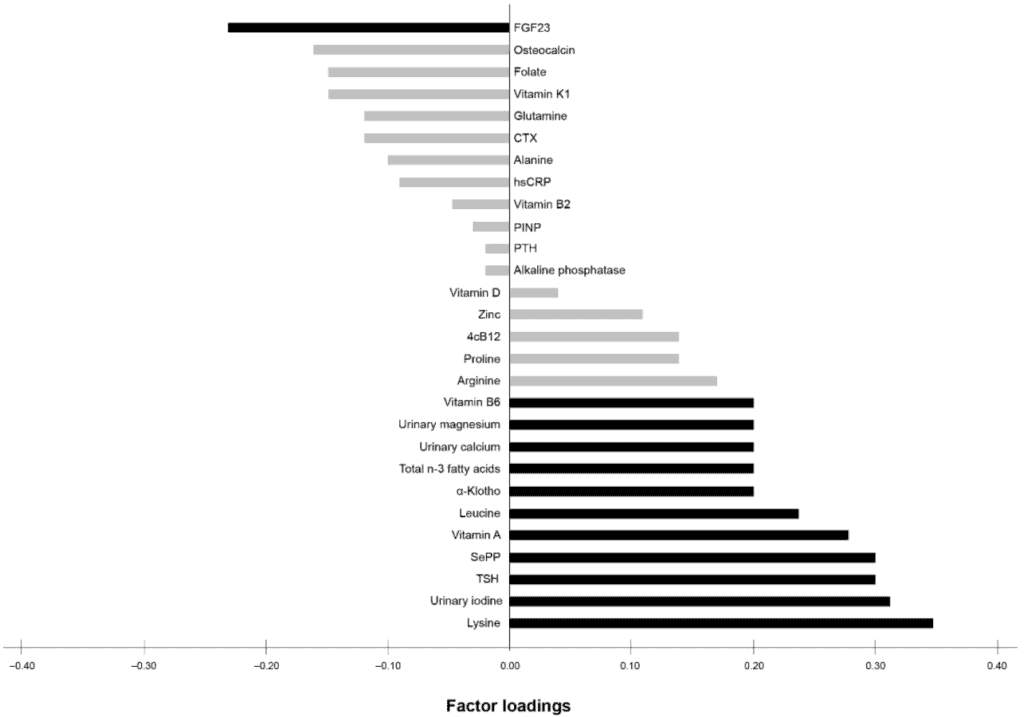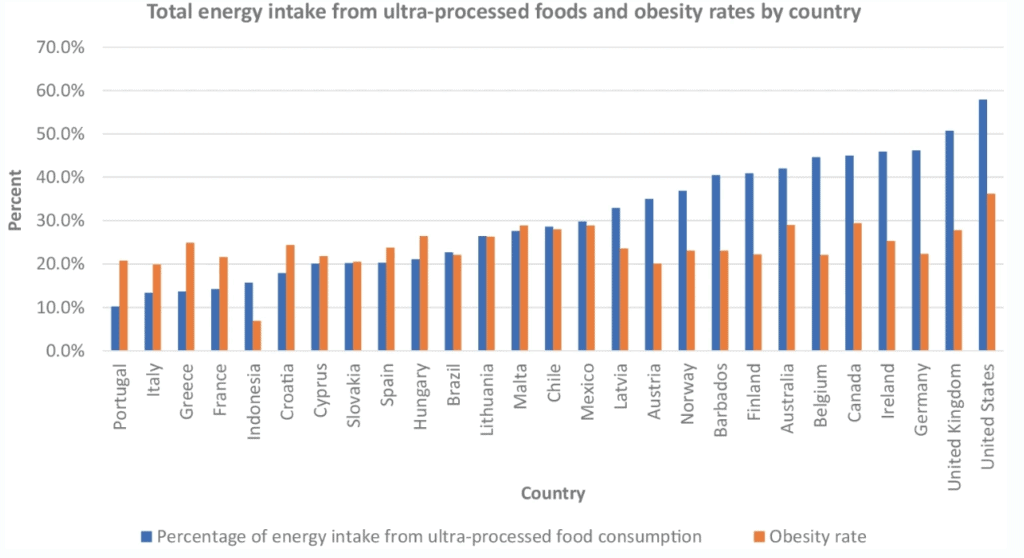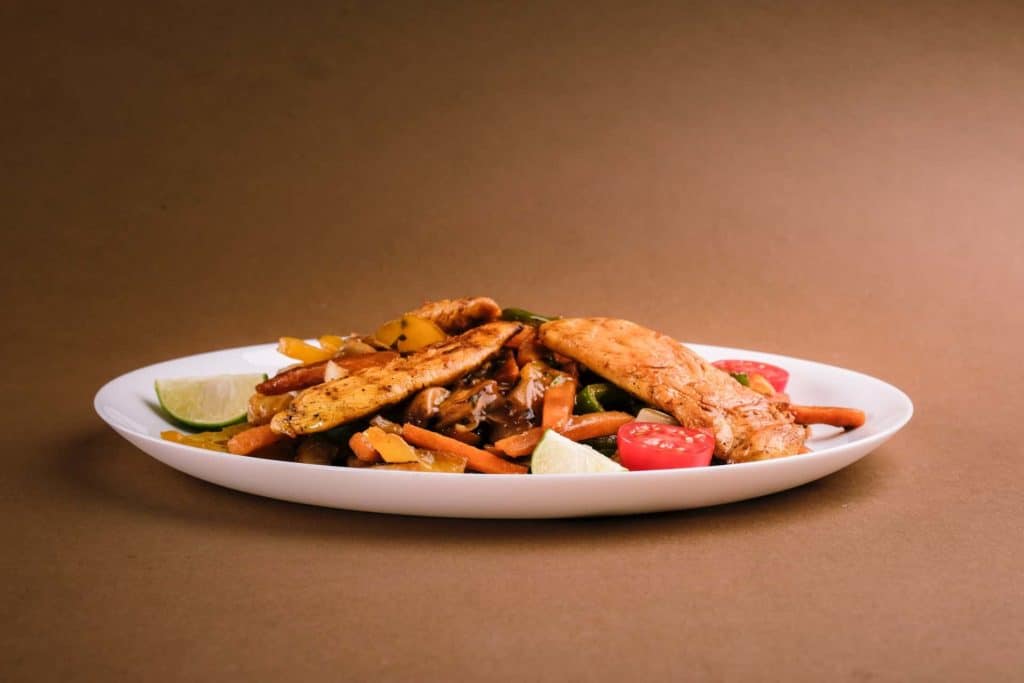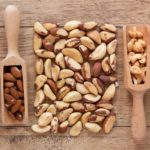
Emily Brown
BSc (Human Nutrition)
Note — The article was checked and updated December 2023.
Removing or cutting anything out from our diet will most likely create imbalances in our body and nutrients levels.
To create a balanced diet, we should include all 5 Food Groups, if possible (if you have food allergies or suffer from conditions where you should be avoiding different foods, this is then understandable).
The 5 Food Groups are:
- Fruits
- Vegetables
- Grains
- Protein
- Fat
Flexitarian approach to eating includes all foods.
Today, we will look into more detail and learn about the diet of our ancestors and how we can benefit from balanced meals.
What is a flexitarian diet?
A flexitarian diet, sometimes known as a semi-vegetarian diet (SVD), is a “flexible” alternative to a vegetarian diet.
Though primarily a vegetarian diet, flexitarian diet can occasionally include meat or fish.[1]
It was first popularised by dietitian Dawn Jackson Blatner who describes this flexible approach as:
“…a semi-vegetarian style of eating that encourages less meat and more plant-based foods. There are no specific rules or suggestions, making it an appealing option for people who are looking to cut back on animal products.”[2]
Flexitarian diet is similar to the diets of our ancestors
Through the study of fossils, it was found that our early ancestors (Homo erectus and early Homo sapiens) were primarily vegetarians, with the occasional addition of meat to their diet.
RELATED — What is a plant-based diet: Vegan or Vegetarian?
This is because fruit and vegetables were seasonably available to gather with little effort, but meat required planned and skilled hunting trips.[3]

Today, due to technological advancements, most humans are eating diets high in
- sugar
- salt
- meat
- fat
which they can easily pick up from their local supermarket.
RELATED — Types of Fats: Healthy and Unhealthy Dietary Fats
Our bodies have not yet adapted to this diet change, and as a result we are facing an epidemic of metabolic diseases such as Type 2 diabetes and heart disease.
RELATED — Diabetes: Early Signs, Causes, Types and Treatment
In attempts to get our health back on track, diets such as the flexitarian diet are becoming increasingly popular, and one third of the New Zealand population reported consciously limiting their meat consumption at the end of 2019.
RELATED — Alternative to meat: Unprocessed plant-based protein sources
The number one reason for this change was health, followed closely by reducing our environmental impact, animal welfare, and costs.[4]
Today's (extreme) variations of flexitarian / semi-vegetarian diets
Today there are many variations of the semi-vegetarian diet that are emerging. A selection of these have been described below.
Pescetarian diet
Pescetarians primarily follow a vegetarian diet, while also consuming fish and seafood products.[5]

Pollotarian diet
A pollotarian diet closely follows the vegetarian diet, while allowing consumption of chicken.
Macrobiotic diet
A macrobiotic diet consists of
- whole grains
- vegetables
- beans
- sea vegetables
- fruit
- white fish
- seeds
- nuts
while avoiding animal products, refined sugar, artificial sweeteners, and other chemical additives.
RELATED — Artificial Sweeteners: Are they a Healthy Substitute to Sugar?
This diet was developed with the purpose of using unrefined, whole, and fresh seasonal foods to aid in people’s poor health.[6]
Kangatarian diet
The Kangatarian diet is a lesser known diet, being mostly popular in Australia. This diet follows a vegetarian diet with the addition of kangaroo meat.
Compared to most other red meats, kangaroo meat is very lean, while still being a good source of protein, iron, and even omega-3 fatty acids.
Another appeal of this diet is that kangaroos don’t need to be farmed and are therefore a more ethical source of meat.[7]
Planetary healthy diet
Developed by the EAT Lancet Commission, the Planetary healthy diet aims to optimise both human health and environmental sustainability.
It is mostly made up of whole grains, fruits, vegetables, nuts, and legumes, with meat and dairy present but in much smaller portions.[8]

VB6 diet
The VB6 diet stands for “Vegan Before 6” and involves being completely vegan until 6pm, meaning no dairy, meat or seafood consumption until this time.
After 6pm, there is no restriction on what we can eat. This diet was created by Mark Bittman, and like the diets above, emphasises large portions of fruits and vegetables while viewing meat and dairy as once a day treats with dinner.[9]
Health benefits of flexitarian diet
One of the most reported reasons for adopting a semi-vegetarian diet is for its proven health benefits.
A high intakes of fruit and vegetables provide a wide range of essential micronutrients, while reducing our intake of red and processed meat can also reduce our risk of chronic diseases.[10]
Flexitarian diet shows 8% decreased risk of all-cause mortality
The health benefits that can come from following a flexitarian diet include
- Weight loss
- Lower risk of type 2 diabetes, or effective management of pre-diabetes
- Lower blood pressure,
- Increased gastrointestinal health from increased fibre
- Decreased cholesterol
- It may help prevent colorectal cancer.[1]
Health risks of flexitarian diet
There aren’t many disadvantages to a flexitarian diet, however with any major dietary change we will need to stay mindful of some aspects.
Some of the health risks of adopting a flexitarian diet are listed below, but all of them can be avoided by making conscious food choices.
Risk of iron deficiency or anaemia
Iron deficiency is already very common in New Zealand, so we need to make sure to include vegetarian sources like chickpeas and dark leafy greens.[11]
Risk of vitamin B12 deficiency
Vitamin B12 is found exclusively in animal products and is essential for our immune system.
By eating meat and dairy in moderation we should get enough vitamin B12 from our diet, and we may want to include fortified plant milks.

Increased risk of low omega-3 fatty acid intake
Omega 3 fatty acids are mostly found in oily fish such as tuna, but can also be sourced from flax seeds, walnuts, and chia seeds.[12]
Eating (too much of) processed foods
Meat and animal products tend to be quite filling due to their protein and fat content, and reducing these may make us feel hungrier than we actually are.
Processed foods are more energy-dense but are nutrient poor

Also, they increase our risk for weight gain and related health complications.[13] Instead, make sure to up your amounts of vegetables, grains, and plant proteins.
Flexitarian diet shopping list
The flexitarian diet aims to be inclusive of the majority of foods.
It is designed to be a long term solution that can be incorporated into a lifestyle, and not a strict diet to stick to for a short amount of time.
Below are a list of
- foods that should make up a majority of your diet
- foods that you should only eat in moderation
- foods that you should mostly avoid

Food to eat
- Fruits
- Vegetables
- Plant proteins (beans, chickpeas, lentils, tofu)
- Whole grains (brown rice, oats, barley, quinoa)
- Plant-based milk
- Nuts, nut butters, seeds, healthy fats
- Oils, herbs, and spices
- Eggs
RELATED — Everything You Need to Know When Buying Eggs (Part 1)
Food to eat in moderation
- Dairy
- Lean meats (chicken, turkey)
- Fish and other seafood
Food to avoid
- Processed meats (bacon, sausages, dried meat, smoked meat)
- Processed and refined carbs (white rice, breakfast cereals, white bread)
- Sugary treats
- Juices and sugary drinks
Flexitarian diet meal plan
One of the main advantages of the flexitarian diet, is that by reducing the amount of processed foods (which tend to be calorie dense), we don’t need to worry about calorie counting, and should just focus on eating intuitively.
RELATED — The Ultimate Guide to Intuitive Eating
In regards to how much meat we should be eating, the flexitarian diet has different “levels” to help guide you to eating more plants.
Flexitarian Levels
- The beginner level recommends 6-8 meatless meals per week, with about 730g of meat per week.
- The advanced level recommends 9-14 meatless meals per week, with about 510g of meat per week.
- The expert level recommends 15+ meatless meals per week, reducing the meat intake to 250g per week.[2]

Flexitarian breakfast plan
- Monday – Apple Pie Overnight Oats by Minimalist Baker
- Tuesday – Smoothie (with soy milk and bananas)
- Wednesday – Peanut butter and bananas on toast
- Thursday – Veggie potato hash with eggs
- Friday – Tofu Scramble (which you can find in our Recipes)
Flexitarian lunch plan
- Monday – Smoky BBQ Bean Tacos by Minimalist Baker
- Tuesday – Creamy Chipotle Tomato Soup by Minimalist Baker
- Wednesday – Chickpea Sandwiches
- Thursday – Summer Squash Grain Salad with Feta and Corn by Fork Knife Swoon
- Friday – Potato, Tuna and Sweet Corn Salad by Potatoes NZ
Flexitarian dinner plan
- Monday – Chickpea curry with brown rice
- Tuesday – Tacos with seasoned white fish or lentils, slaw, salsa, and guacamole
- Wednesday – Chicken or bean burger with lettuce, tomatoes and sweet potato fries
- Thursday – Ginger Miso Soba Soup by Fork Knife Swoon
- Friday – Haloumi Buddha Bowls by YUM
Related Questions
1. What are 3 types of vegetarian diets?
There are a wide range of vegetarian diets, all of which differ slightly, but we should aim to eat more plant-based and less animal foods.
Classic vegetarian diet: excludes all meat, poultry, fish or seafood, but still includes dairy products, honey and eggs.
- Lacto-vegetarian diet (vegetarian diet, with exception of eggs)
- Ovo-vegetarian diet (vegetarian diet, with exception of dairy; this diet is common for lactose-intolerant individuals.)
- Vegan diet (excludes all animal products and products from animals, e.g. honey, dairy, and eggs).
RELATED — The Vegan Diet and Lifestyle: Benefits, Risks and Meal Plans
2. Is flexitarian diet good for diabetes management?
Vegetarian diets are recommended for people with diabetes, and reduce the risk of further health complications.
Flexitarian diets have been shown to reduce certain diabetes markers such as glucose and insulin. It can also reduce the risk of insulin resistance, which contributes to diabetes.
This is likely due to weight loss, and a diet higher in fibre, and lower in animal protein and haem iron.[12]
What is your current diet like – are you relying too much on processed foods and takeaways? Let us know in the comments.
It might be time to get more aware of what we are eating.
Emily is currently pursuing a Masters degree in Advanced Nutrition Practice. Her focus is on the role nutrition plays in physical activity and sport performance, while also gaining a better understanding of the nutritional treatments for Type 2 Diabetes and cardiovascular diseases, which are major contributors to health complications in New Zealand.
Emily’s interest in nutrition stems from her personal experience in sport at an elite level and the importance of diet regarding our performance and capabilities. Upon completion of her postgraduate studies, she intends to gain qualifications as a Registered Nutritionist and progress towards a career of a Sports Nutritionist.
Emily is a part of the Content Team that brings you the latest research at D’Connect.
References
(1) Derbyshire, E. J. (2017). Flexitarian Diets and Health: A Review of the Evidence-Based Literature. Frontiers in Nutrition, 3. Retrieved from https://www.ncbi.nlm.nih.gov/pmc/articles/PMC5216044/
(2) Blatner, D. J. (2008). The Flexitarian Diet: The Mostly Vegetarian Way to Lose Weight, Be Healthier, Prevent Disease, and Add Years to Your Life. McGraw-Hill Education.
(3) Andrews, P., & Johnson, R. J. (2020). Evolutionary basis for the human diet: consequences for human health. Journal of internal medicine, 287(3), 226-237. Retrieved from https://doi.org/10.1111/joim.13011
(4) Food Frontier, Life Health Foods. Hungry for Plant-Based: New Zealand Consumer Insights. Online. 2019 Oct, Accessed 20/3/22. Retrieved from https://www.foodfrontier.org/wp-content/uploads/2019/10/Hungry-For-Plant-Based-New-Zealand-Consumer-Insights-Oct-2019.pdf
(5) Melina, V., Craig, W., & Levin, S. (2016). Position of the Academy of Nutrition and Dietetics: Vegetarian Diets. Journal of the Academy of Nutrition and Dietetics, 116(12), 1970-1980. Retrieved from https://doi.org/10.1016/j.jand.2016.09.025
(6) Horowitz, J. J., & Tomita, M. M. (2002). The Macrobiotic Diet as Treatment for Cancer: Review of the Evidence. Permanente journal, 6(4), 34-37. Retrieved from https://www.ncbi.nlm.nih.gov/pmc/articles/PMC6220645/
(7) Cushing, N. (2019). To Eat or Not to Eat Kangaroo: Bargaining over Food Choice in the Anthropocene. M/C Journal, 22(2). Retrieved from https://doi.org/10.5204/mcj.1508
(8) EAT-LancetCommission, The Planetary Health Diet. Online. Accessed 20/3/22. Retrieved from https://eatforum.org/eat-lancet-commission/the-planetary-health-diet-and-you/
(9) Bittman, M. (2013). Vegan Before 6: Lose weight and restore your health with the flexible diet you can really stick to. Hachette UK.
(10) Lancet, T. (2018). We need to talk about meat. The Lancet (British edition), 392(10161), 2237-2237. Retrieved from https://doi.org/10.1016/S0140-6736(18)32971-4
(11) Baines, S., Powers, J., & Brown, W. J. (2007). How does the health and well-being of young Australian vegetarian and semi-vegetarian women compare with non-vegetarians? Public health nutrition, 10(5), 436-442. Retrieved from https://doi.org/10.1017/S1368980007217938
(12) Pawlak, R. (2017). Vegetarian Diets in the Prevention and Management of Diabetes and Its Complications. Diabetes spectrum, 30(2), 82-88. Retrieved from https://doi.org/10.2337/ds16-0057
(13) Crimarco, A., Landry, M. J., & Gardner, C. D. (2021). Ultra-processed Foods, Weight Gain, and Co-morbidity Risk. Current obesity reports. Retrieved from https://doi.org/10.1007/s13679-021-00460-y







Very informative article. Thanks for sharing such an amazing post, it is very helpful.